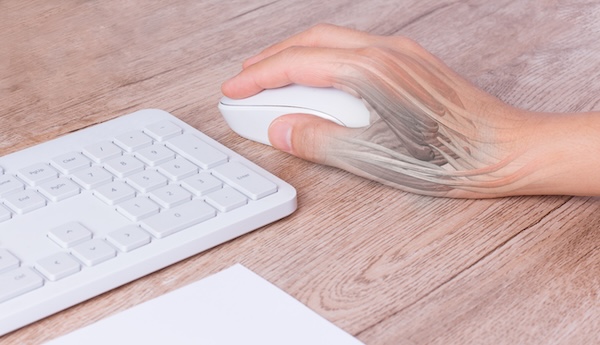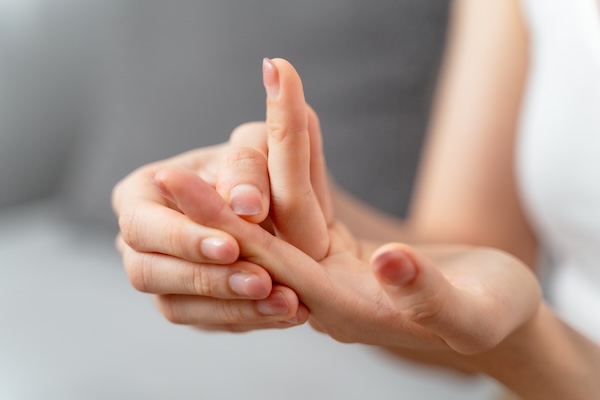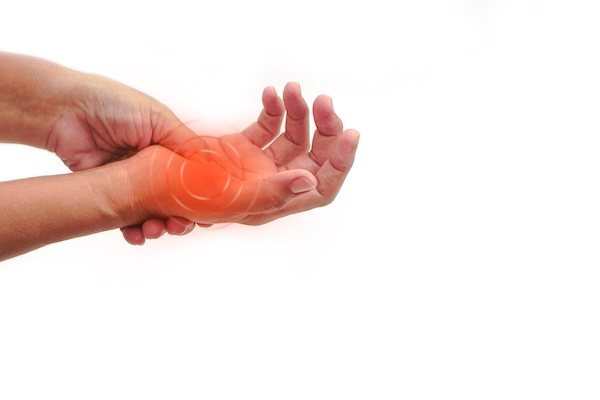Flexor Tendon Injuries: Causes, Treatment, and Recovery
Flexor tendon injuries occur when the tendons that help bend your fingers or thumb are damaged, often causing significant pain, restricted motion, and impaired hand function. These injuries can be the result of a laceration, trauma, or sports-related injury. Understanding the causes, treatment options, and recovery process for flexor tendon injuries is critical for restoring full hand function and preventing long-term complications.
What Are Flexor Tendons?
Flexor tendons are strong, cord-like tissues that connect the muscles in your forearm to the bones in your fingers and thumb. These tendons enable you to bend (or flex) your fingers, making them essential for gripping, holding, and performing fine motor tasks. Because these tendons are located just beneath the skin, they are particularly vulnerable to injury from cuts, puncture wounds, or crushing trauma.
Common Causes of Flexor Tendon Injuries
Flexor tendon injuries often result from:
- Deep cuts or lacerations: These injuries can sever the tendons, making it impossible to bend the affected fingers.
- Sports-related trauma: Activities such as football, rugby, or rock climbing can cause traumatic injuries to the tendons.
- Accidental trauma: Injuries from sharp objects or accidents involving heavy machinery can damage the tendons.
- Rheumatoid arthritis: This chronic condition can weaken the tendons, making them more susceptible to rupture or injury.
Symptoms of Flexor Tendon Injuries
When you experience a flexor tendon injury, the symptoms can vary depending on the severity of the damage, but they typically impact the movement and functionality of the hand. Recognizing these symptoms early is crucial for seeking prompt treatment and preventing long-term complications.
Common symptoms of flexor tendon injuries include:
- Inability to bend the fingers or thumb: One of the most significant signs of a flexor tendon rupture or tear is the inability to bend one or more fingers or the thumb. This is due to the severed tendon no longer being able to transmit force from the muscles in the forearm to the fingers, making it impossible to perform gripping or pinching movements.
- Pain and tenderness along the palm and forearm: Patients with flexor tendon injuries often experience sharp or aching pain along the palm side of the hand, fingers, or forearm. This discomfort can intensify when attempting to move the fingers or put pressure on the hand, such as during gripping or lifting activities.
- Swelling and bruising: Injury to the flexor tendons often leads to swelling, inflammation, and bruising around the site of the injury. The area may become visibly swollen, and bruising can spread along the palm, fingers, or forearm, depending on the extent of the trauma.
- Visible gap or laceration in the skin: In more severe cases where the tendon is completely severed, there may be a noticeable gap or cut in the skin over the injured tendon. This is commonly seen in laceration injuries caused by sharp objects, such as knives or glass, which penetrate the skin and sever the tendon beneath.
- Numbness or tingling in the affected fingers: Damage to the flexor tendons can also impact nearby nerves, leading to symptoms like numbness, tingling, or a pins-and-needles sensation in the affected fingers or thumb. This often occurs when the injury compresses or irritates the surrounding nerves in the hand or forearm, impairing normal sensation.
If you experience any of these symptoms following a hand injury, it’s essential to seek medical attention immediately. Without timely treatment, a flexor tendon injury can lead to permanent stiffness, loss of hand function, and reduced grip strength.
Diagnosing Flexor Tendon Injuries
At Georgia Spine & Orthopaedics, diagnosing flexor tendon injuries begins with a thorough physical examination of your hand. Our specialists assess your ability to move your fingers, checking for any limitations in motion, strength, and sensation. Imaging tests such as ultrasound or MRI scans may be used to confirm the extent of the tendon damage, especially in cases where the injury is not visible externally. Proper diagnosis is crucial to creating an effective treatment plan that restores full function to the injured tendons.
Non-Surgical Treatment for Flexor Tendon Injuries
In some cases, non-surgical treatments may be appropriate for minor tendon injuries or partial tears. These treatments can include:
- Splinting or bracing: Immobilizing the hand and fingers to allow the injured tendon to heal naturally.
- Physical therapy: Once the initial healing phase is complete, therapy can help restore flexibility and strength to the tendons.
- Anti-inflammatory medications: Medications such as NSAIDs can reduce swelling and pain, aiding in the recovery process.
However, complete tendon lacerations usually require surgical intervention for proper healing.
Surgical Treatment for Flexor Tendon Injuries
Most flexor tendon injuries require surgery to repair the damaged tendons, particularly if the tendon has been fully severed. The procedure involves stitching the tendon ends back together to restore function. At Georgia Spine & Orthopaedics, our orthopedic surgeons specialize in minimally invasive tendon repair surgery, focusing on precise repairs that promote faster healing and reduce scarring.
After surgery, the hand will be immobilized in a splint to protect the repair. During this time, patients should avoid any activities that could strain or disrupt the healing tendon.
Rehabilitation and Recovery
Rehabilitation is a crucial aspect of recovery from flexor tendon injuries. At Georgia Spine & Orthopaedics, we provide customized hand therapy programs that are designed to restore strength and flexibility to the hand and fingers while preventing stiffness or re-injury.
Our physical therapists guide you through progressive hand exercises that gradually improve range of motion and build strength. Recovery timelines can vary, but most patients regain full use of their hand within 3 to 6 months, depending on the severity of the injury and the effectiveness of the rehabilitation program.
FAQs About Flexor Tendon Injuries
1. How can I tell if I have a flexor tendon injury?
If you’re unable to bend one or more of your fingers or thumb after a cut, laceration, or traumatic injury, you may have sustained a flexor tendon injury. The inability to move your fingers is often a clear indication that the tendon responsible for flexing them has been partially or completely severed. Other common symptoms include pain, swelling, and tenderness on the palm side of the hand or forearm.
You may also notice numbness or tingling in the affected fingers, especially if nearby nerves are also involved. If left untreated, flexor tendon injuries can result in permanent stiffness, loss of motion, or weakened grip strength. It’s crucial to seek a medical evaluation from an orthopedic specialist to ensure timely treatment and prevent long-term damage.
2. How are flexor tendon injuries treated?
The treatment of flexor tendon injuries typically depends on the severity of the injury. In most cases where the tendon has been fully severed, surgical intervention is required to repair the damaged tendon. The surgeon will carefully stitch the ends of the tendon back together to restore proper function. Following surgery, the hand is usually immobilized with a splint or brace to protect the repair during the initial healing phase.
Physical therapy and rehabilitation exercises are essential components of recovery, helping to rebuild strength, flexibility, and range of motion in the hand. For minor injuries or partial tears, non-surgical treatments such as splinting, medications (like NSAIDs), and rest may suffice, but rehabilitation is still a vital part of ensuring a successful recovery.
3. How long does it take to recover from flexor tendon surgery?
The recovery process following flexor tendon surgery can vary depending on the extent of the injury and the specific treatment performed, but it generally takes around 3 to 6 months. In the weeks immediately after surgery, the hand will be immobilized to allow the tendon to heal properly. After this initial healing period, physical therapy will begin, focusing on gradually restoring the strength and mobility of the affected fingers and hand.
The success of your recovery largely depends on adhering to your rehabilitation plan, which includes a range of hand exercises tailored to regain function and flexibility. Patients who commit to their therapy are less likely to experience complications such as stiffness or re-injury and are more likely to achieve a full recovery.
4. What are the risks of delaying treatment for flexor tendon injuries?
Delaying treatment for a flexor tendon injury can lead to serious complications. One of the most significant risks is the development of permanent stiffness in the affected fingers, as scar tissue can form around the injury site. This scar tissue can interfere with the tendon’s ability to glide smoothly, making surgical repair more challenging and potentially limiting the range of motion even after treatment.
Additionally, prolonged damage to the tendons can cause loss of strength and function, hindering your ability to perform everyday tasks that require gripping or pinching. Prompt medical intervention helps ensure that you receive the most effective treatment, leading to better outcomes and preventing long-term damage.
5. Can physical therapy fully restore hand function after a flexor tendon injury?
Yes, physical therapy is a crucial element in the recovery from a flexor tendon injury and plays a vital role in restoring full hand function. After surgery or non-surgical treatment, a structured rehabilitation program is designed to gradually rebuild strength, flexibility, and range of motion in the affected fingers and hand. While therapy can significantly improve outcomes, the extent of recovery depends on several factors, including the severity of the initial injury, the timing of treatment, and the patient’s commitment to following the therapy protocol.
With diligent participation in therapy and the guidance of a skilled hand therapist, many patients are able to achieve near-complete or full restoration of hand function.
Expert Flexor Tendon Care at Georgia Spine & Orthopaedics
At Georgia Spine & Orthopaedics, we are dedicated to providing comprehensive, patient-focused care for those recovering from flexor tendon injuries. Our approach combines cutting-edge diagnostics, advanced surgical techniques, and personalized rehabilitation plans to help restore full functionality to your hand. We understand that flexor tendon injuries can significantly impact your ability to perform everyday tasks, and our goal is to deliver the highest standard of care to ensure a smooth and effective recovery.
Our team of highly trained orthopedic specialists and hand surgeons work closely with each patient, tailoring treatment plans to their specific injury, lifestyle, and recovery goals. From your initial diagnosis through every stage of treatment, we focus on delivering personalized care designed to meet your unique needs. Whether you require non-surgical treatments, such as splinting and physical therapy, or more advanced surgical repair, our specialists will guide you through the entire process.
At Georgia Spine & Orthopaedics, we believe that a successful recovery extends beyond just treating the injury. That’s why we emphasize comprehensive rehabilitation programs that help you regain strength, flexibility, and mobility in your hand. Our hand therapists collaborate with our surgeons to develop progressive exercise routines aimed at restoring your ability to grip, grasp, and perform other fine motor tasks. We provide ongoing support throughout your rehabilitation journey, adjusting treatment plans as necessary to ensure optimal results and long-term hand health.
If you’ve experienced a flexor tendon injury, it’s crucial to seek prompt treatment to avoid complications like chronic stiffness, loss of hand function, or permanent weakness in the fingers. Delaying care can lead to more complex surgical procedures and prolonged recovery times. Don’t let a flexor tendon injury hinder your quality of life—our team of orthopedic experts is here to help you regain full use of your hand.
Take control of your recovery today by scheduling an appointment with Georgia Spine & Orthopaedics. With our comprehensive approach, cutting-edge treatments, and dedicated team of specialists, we are committed to helping you achieve a complete recovery and regain your hand’s full functionality.
Contact us now at 678-929-4494 to start your journey toward healing and reclaiming your mobility and independence.








